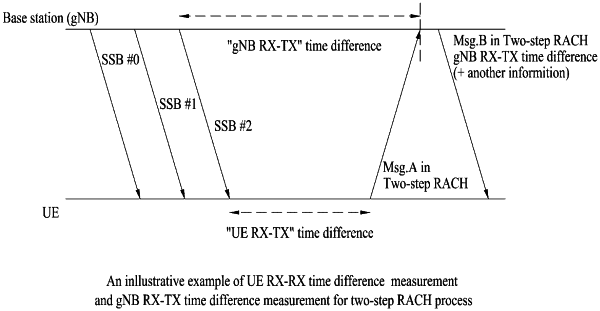| CPC H04W 56/0045 (2013.01) [H04W 74/0833 (2013.01)] | 12 Claims |

|
1. A method performed by an apparatus, the method comprising:
receiving a synchronization signal block (SSB) from a base station;
performing a random access procedure; and
obtaining information related to timing advance (TA),
wherein the random access procedure comprises:
transmitting a first message including a physical random access channel (PRACH) preamble based on the SSB; and
receiving a second message including information related to a random access response (RAR) after transmitting the first message,
wherein the TA is obtained based on a sum of:
(i) a difference between a reception time of the SSB at the apparatus and a transmission time of the first message at the apparatus; and
(ii) a difference between a transmission time of the SSB at the base station and a reception time of the first message at the base station,
wherein the second message further includes information related to a timing offset and information related to a timing offset,
wherein the timing offset is related to a downlink (DL) uplink (UL) switching time of the base station, and
wherein the TA is obtained based on:
the timing offset being applied to the sum of (i) the difference between the reception time of the SSB at the apparatus and the transmission time of the first message at the apparatus, and (ii) the difference between the transmission time of the SSB at the base station and the reception time of the first message at the base station.
|